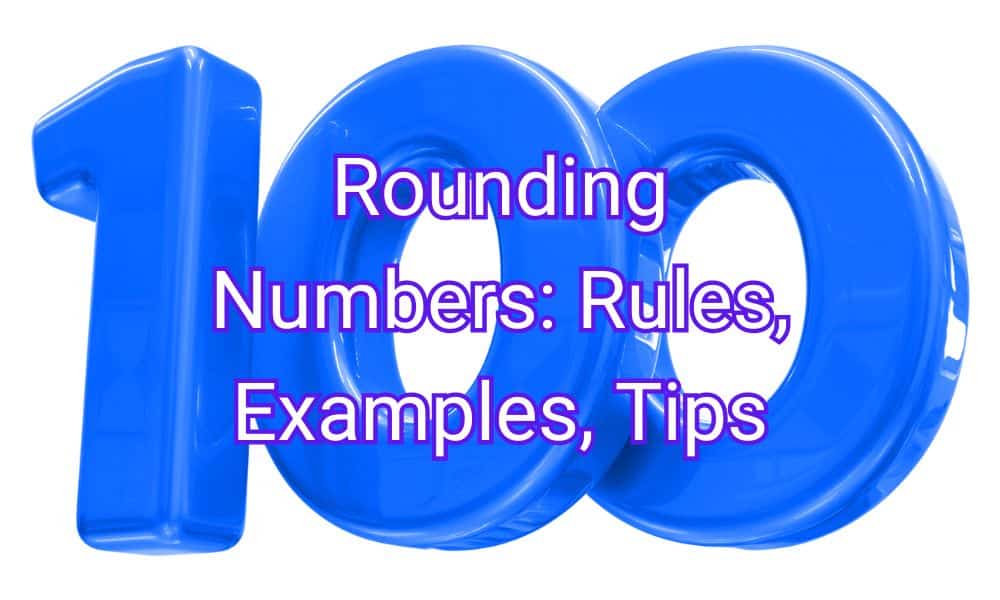
Rounding numbers is a fundamental mathematical skill that simplifies complex calculations and makes them more manageable. It involves adjusting a number to the nearest ten, hundred, or thousand based on specific rules.
Rounding to the nearest 10
Rules for rounding to the nearest 10:
- Identify the ones place: Look at the digit in the ones place (the last digit of the number).
- Determine the rounding digit:
- If the ones digit is 5 or more, round up by adding 1 to the tens place.
- If the ones digit is less than 5, round down by keeping the tens place the same.
- Adjust the Number: Change all digits to the right of the tens place to zero.
Examples:
- Example 1: Round 47 to the nearest 10.
- Ones digit: 7 (greater than 5)
- Rounding up: 47 becomes 50.
- Example 2: Round 132 to the nearest 10.
- Ones digit: 2 (less than 5)
- Rounding down: 132 becomes 130.
Rounding to the nearest 100
Rules for rounding to the nearest 100:
- Identify the tens place: Look at the digit in the tens place.
- Determine the rounding digit:
- If the tens digit is 5 or more, round up by adding 1 to the hundreds place.
- If the tens digit is less than 5, round down by keeping the hundreds place the same.
- Adjust the number: Change all digits to the right of the hundreds place to zero.
Examples:
- Example 1: Round 374 to the nearest 100.
- Tens digit: 7 (greater than 5)
- Rounding up: 374 becomes 400.
- Example 2: Round 841 to the nearest 100.
- Tens digit: 4 (less than 5)
- Rounding down: 841 becomes 800.
Rounding to the nearest 1,000
Rules for rounding to the nearest 1,000:
- Identify the hundreds place: Look at the digit in the hundreds place.
- Determine the rounding digit:
- If the hundreds digit is 5 or more, round up by adding 1 to the thousands place.
- If the hundreds digit is less than 5, round down by keeping the thousands place the same.
- Adjust the number: Change all digits to the right of the thousands place to zero.
Examples:
- Example 1: Round 2,678 to the nearest 1,000.
- Hundreds digit: 6 (greater than 5)
- Rounding up: 2,678 becomes 3,000.
- Example 2: Round 5,432 to the nearest 1,000.
- Hundreds digit: 4 (less than 5)
- Rounding down: 5,432 becomes 5,000.
Practical applications of rounding
Rounding numbers is not just a mathematical exercise; it has practical applications in everyday life:
- Estimating costs: When shopping, rounding prices to the nearest dollar can help you quickly estimate the total cost.
- Time management: Rounding time to the nearest minute or hour can make scheduling easier.
- Data analysis: In statistics, rounding can simplify large datasets, making trends easier to identify.
Tips for teaching rounding
- Use visual aids: Number lines and charts can help students visualize the rounding process.
- Practice with real-life examples: Use examples from daily life to make the concept relatable.
- Interactive activities: Engage students with games and activities that reinforce rounding skills.
Conclusion
Rounding numbers to the nearest 10, 100, and 1,000 is a valuable skill that simplifies calculations and enhances numerical understanding. By following the straightforward rules for each rounding level, students can easily grasp and apply the concept in various contexts. Practice, visualization, and real-life applications are key to mastering this essential mathematical skill.
Rounding worksheets with answers
- Rounding numbers worksheet to the nearest 10 within 0-100
- Rounding numbers worksheet to the nearest 10 within 0-100
- Rounding numbers worksheet to the nearest 10 within 0-1000
- Rounding numbers worksheet to the nearest 100 within 0-1,000
- Rounding numbers worksheet to the nearest 100 within 0-10,000
- Rounding numbers worksheet to the nearest 1,000 within 0-10,000
- Rounding numbers worksheet to the nearest 10,000 within 0-100,000
- Rounding numbers worksheet to the nearest 10,000 within 0-100,000
- Rounding numbers worksheet to the nearest 10,000 within 0-1,000,000
Edublox offers cognitive training and live online tutoring to students with dyslexia, dysgraphia, dyscalculia, and other learning disabilities. Our students are in the United States, Canada, Australia, and elsewhere. Book a free consultation to discuss your child’s learning needs.
Authored by Shanice Jordaan. Shanice holds a bachelor’s degree in education and has extensive teaching experience, having taught math for five years and English for three. She leverages her skills as an English teacher, online ESL teacher, and math and reading tutor to design engaging lessons, foster positive learning environments, and cater to diverse learning needs. Worksheets created by Caitlin Jacobs.


